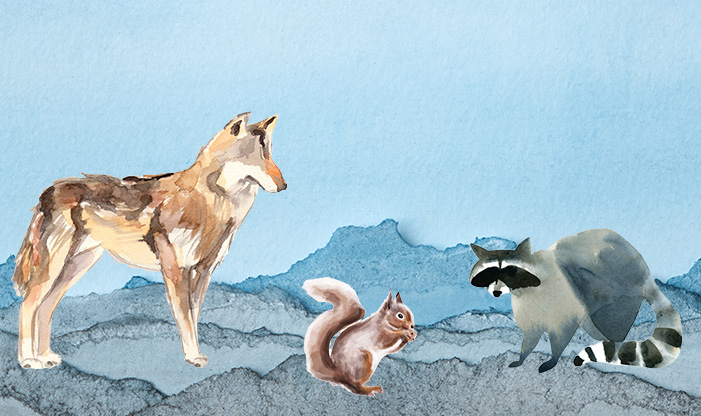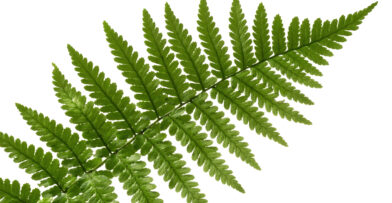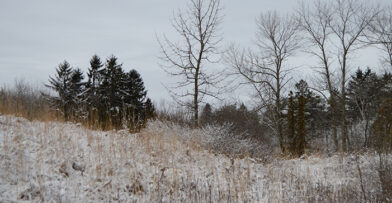Winter is a challenging time for most animal species in Wisconsin, yet each of them successfully adapts in complex ways to overcome harsh conditions. Despite food scarcity, exposure to cold temperatures, and a shorter photoperiod, many animals find ways to thrive through varying winter survival strategies. The season may appear quiet on the surface, but if you want to witness often hidden animal activity, you just need to know where to look and pay attention.
Over time, animals have adapted to the challenges of winter by forming strategies that help them survive seasonal weather. These strategies include staying active, dormancy, hibernation/brumation, migration, and even death. Some animals employ several of these strategies, while others rely on just one.
Animals That Are Active
Some animals remain active in the cold months because enough food is available for them. They must still adjust to changes in temperature and light, but they are able to maintain activity by adapting to the season’s harsher environmental conditions.
The coyote thrives in winter because it is a (mostly) carnivorous hunter and there are ample prey species living within its territory. Often active at night, as evidenced by tracks and scat we find, they hunt within a specific territory. They eat small mammals, such as rabbits, mice, and squirrels. Nocturnal activity also helps them avoid contact with humans, who coyotes naturally fear. They may also eat crab apples and berries as needed, evidenced by berry skins and seeds in scat. At Schlitz Audubon, coyotes create and defend territories on the Lake Terrace Trail, the West Meadows, and the North Ravine.
Squirrels remain very active in winter, though their survival strategy is quite different than the coyote. Squirrels spend autumn gathering and storing (caching) food, which would otherwise be hard to find in the frozen winter landscape. Red squirrels store all their food in one cache and defend it from other animals. Gray squirrels conversely scatter their hoard, spreading food in many caches throughout an accessible area. Both species are busiest when they need to protect or retrieve their food.
Animals That Hibernate
Contrary to popular perception, very few animals truly hibernate in winter. Hibernation is a deep sleep from which the animal doesn’t wake up until spring, dependent on temperature and photoperiod. The groundhog is a regional example of an animal that hibernates. They can have their sleep cycles adjusted when they are in captivity, but in the wild they don’t wake up, not even on February 2nd.
When groundhogs hibernate, their body temperature drops from 99°F to approximately 30°F, and they will sleep from three to four months. All bodily functions slow dramatically including respiration and heart rate. Scientists are closely watching to see if warmer temperatures, due to climate change, may cause them to rise earlier in the season.
Animals That Are Dormant
Unlike true hibernation, dormancy is triggered by temperature alone, rather than both temperature and photoperiod. Sometimes called torpor, this sleep state is less deep than hibernation: dormant animals can wake up when it is warm. They may also wake up to eat or relieve themselves. Scientists use cameras in burrows of both hibernating and dormant animals to learn how their bodies respond to winter cold.
Chipmunks enter dormancy when it is 40°F and below but wake up if it is warmer. During dormancy, the chipmunk’s heartbeat will go from its normal 350 beats/minute down to about four beats/minute, while their internal temperature also drops. Chipmunks cache food in underground burrows containing numerous chambers with specialized uses. They gather hickory, basswood, and acorn nuts and store them in burrows hidden beneath rocks and sheltered areas. Chipmunks don’t build up a large layer of body fat before winter, so they wake up periodically to eat their cached food. A great place to see chipmunks here is in the spruce grove near the Secret Forest Classroom and the Tower.
Another mammal that becomes dormant is the racoon. Racoons build up a large store of body fat but need to keep eating. Racoons sleep for a few days at a time and adjust their dormancy based on their nutritional needs and temperature. They live in dens, including brush piles, and they change their living quarters frequently. Racoons are often found living under the Pavilion and near Teal Pond. They are a nocturnal animal, so when seen during the day they are typically desperate for food. While it is highly unlikely to see dormant animals in the dead of winter, they could be present if temperatures are above freezing.
Animals That Brumate
Reptiles and amphibians brumate, which is similar to hibernation. These ectothermic animals warm their bodies using external sources, while endothermic animals, such as mammals, can create their own body heat. Changes in temperature, rather than food availability, trigger changes in brumating animals’ metabolism. Cold temperatures cause reptiles and amphibians to lose the capability for movement. Thus, they know it is time for a long-term seasonal change.
Painted turtles bury themselves in the mud in the deepest area of the pond when it gets cold, and the surface begins to freeze. Being underwater ensures a more stable temperature compared to being buried in the ground on land. This seemingly impossible feat is accomplished because of their special breathing capabilities. Water contains oxygen, and the turtle takes advantage of this by using cloacal respiration, which means they essentially breathe through their butt! The membranes in this area are situated close to blood vessels and can diffuse enough oxygen to supply the turtle’s needs when it is underneath the water. It also helps that their heartrate drops from 40 beats/minute to around one beat/minute. Their metabolism is reduced by 90 percent, and they rely on stores of glycogen. Painted turtles build up lactic acid during brumation, which stiffens the muscles. Although you won’t see the painted turtles at the Center in winter, we know they are hidden underneath the surface of our ponds.
Wood frogs brumate uniquely. When temperatures dip below freezing, they will move to a crack in a log or dig into leaf litter for their winter abode, and they will freeze! Their cells freeze on the outside, while the interior of their cell structure remains active and intact due to an abundance of glucose, an antifreeze-like substance. Though their exterior tissues may be frozen, their internal organs remain viable and important metabolic functions are merely slowed down. If you find a frog in winter that appears to be lifeless, it may still be very alive, just mostly frozen. Wood frogs remain in this state until the warmer temperatures of spring cause them to thaw out, after which their heart will beat, and they will crawl onto the surface again.
Animals That Migrate
Birds are a prime example of animals that migrate. Colorful warblers are typical migrating birds, and humans watch their departure each fall and anticipate their arrival next spring. Long-distance travelers, warblers and other songbirds may make a journey to Central America or South America. As most warblers rely primarily on insects, and insects are ectothermic (and thus not available in the northern hemisphere during the cold winter months), many insect-eating birds head south.
Animals That Adapt as a Species by Death
When survival through winter is not possible, many insects time their reproduction so their offspring can survive until next spring. A number of moth species, for example, will lay eggs before passing away, and their offspring survive winter as eggs, pupa, or larva before emerging in the spring to begin the species’ life cycle anew.
The many winter strategies animals use demonstrate how adaptable wildlife can be when faced with challenging conditions. Visit the Center soon to see animal activity or investigate evidence of nighttime animals in the form of scat, tracks, and burrows. Wintertime becomes truly alive with animal life when you know how and where to look!
With contributions from Aubrey Ellickson Fulsaas, Cassie Rincon, and Melanie Ziolecki


